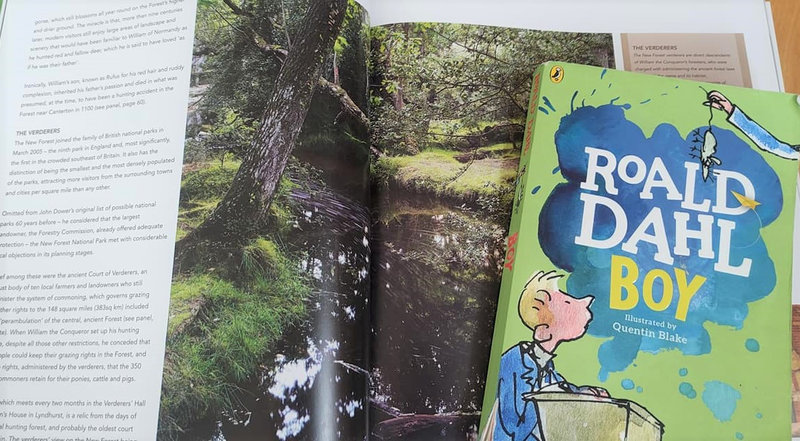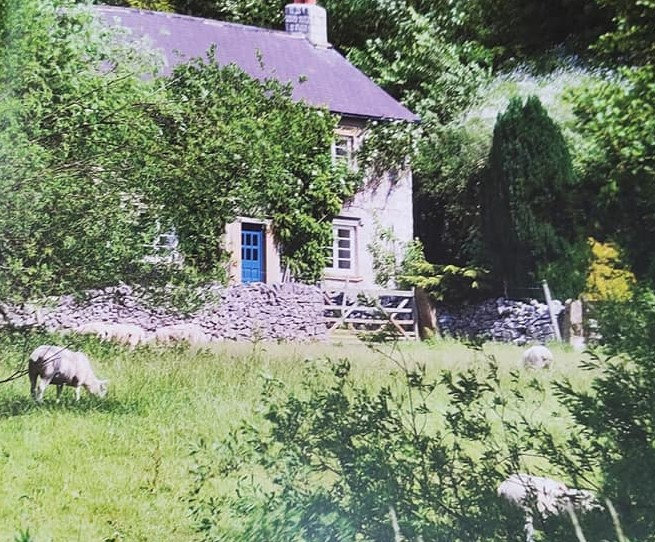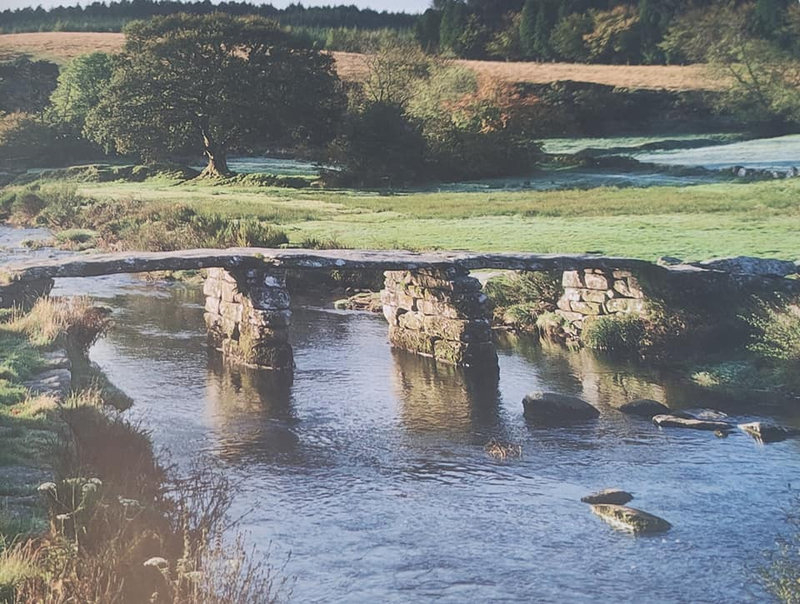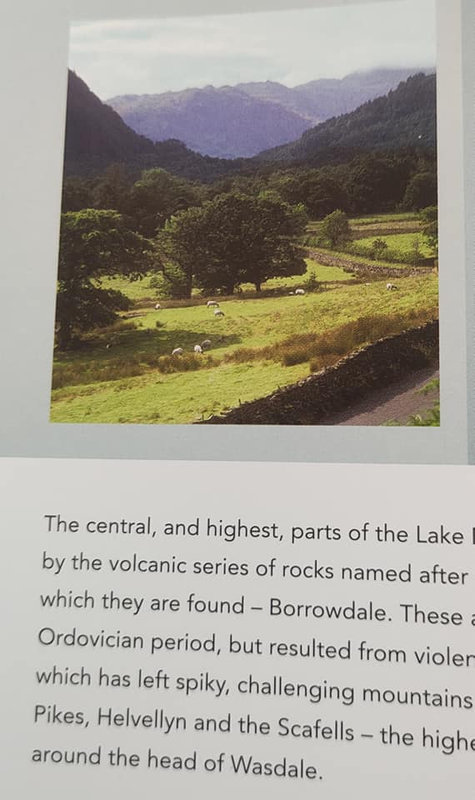Boy by Roald Dahl
Everybody knows Roald Dahl. At the back of this cover book, it says that he is :“The world’s number one storyteller”. This is not just a marketing strategy elaborated by the publisher. This is the truth. Many of his books are masterpieces. Discovering or reading again one of his novel made me realise how brilliant he is at using a variety of feelings in his stories.
To start with, on the first page, there is a note from the writer R.D. or we might consider it as a warning. He is stating that “Boy” is not an autobiography, only because he “would never writes a history of himself”. I think, he probably meant that he is an humble man. An ordinary man with a sharp memory. A writer should not show any feelings of superority. In 1989, during a television interview, Dalh said : "At the moment you start thinking what you are doing is very good, as you are doing it, then it's usually very bad. You must always fear that what you are writing may be rubbish and try to make it better all the time."
To say that "Boy" is not an autobiography might also be considered as a preterition. He's using a rhetorical technique. He says that he's not going to write about his own life because it might be too boring, and thereby he's doing it.
Now considering that this book recalls events from the day he was born to the year he did start working, it does look like a story about his own existence, divided in four different sections. Today, I shall write about the first two ones.
Papa and Mama
Roald Dahl’s father was a Norwegian who lost his left arm on tragic circumstances when he was only fourteen years old. He was a brave and resilient man who invented an ingenious instrument so he could eat and cut up his food like everyone else : “He sharpened the bottom edge of a fork so that it served as both knife and fork all in one.” He was a shipbroker. He met his first wife Marie in Paris. She was from France. Then, they moved to Cardiff but a significant and tragic even happened there. Marie sadly died after giving birth to the second child.
Roald Dahl’s father was feeling lonely so he decided to spend the summer of 1911 back to his homeland where he met a young lady Sofie Magdalene Hesselberg. He married her and they had four children.
The part I enjoyed the most in the first chapter was the description of the concept of “glorious walk.” Every time his mother became pregnant, his dad used to insist on walking to some beautiful places, in the middle of the British countryside so that his mum would absorb the beauty of nature. He was convinced that admiring the surrounding would somehow be transmitted to the unborn baby.
Born to contemplate the world.
Let's virtually travel now. Let's have a look at some pictures of the fascinating and wonderful British countryside from the book : "National parks of Britain" by Roly Smith.
Kindergarten (1922-1923)
In 1929, a tragic event happened in Roald Dahl’s family. His sister Astri was only seven years old when she died from appendicitis. Passing away at an early age at the time was sadly common. This would not have happened today because doctors can use penicillin and know how to cure very dangerous illnesses. The father was so overwhelmed with grief that when he himself went down with pneumonia just a bit latter on, he did not much care about his life. He was fifty-seven years old when he passed away.
Dahl’s mother respond to the double catastrophe was very impressive. Her decision to stay in England where she did not have any relatives shows that she was not only brave but also independent. She was courageous because she refused to take the easy way out. She was in charge of six children, and decided that she would carry out the wishes of her dead husband. He used to say that : “English schools were the best in the world” so Roald Dahl was six years old when he started going to Kindergarten in Wales. He used to go there with his new tricycle and and the journey for him was “tremendously exciting.” Page 20, there is a fantastic illustration done by Quentin Blake. We can see a proud young boy enjoying his ride going to school. This is my attempt at illustration artwork.
The bicycle and the Sweet-shop (1923-1925)
There are two moments Dahl can recall from the Llandoff School he attended from age seven to nine. “The first lasted not more than five seconds” but it was so vivid in his memory that he knew he would never forget about it. One day, he was walking to school and suddenly he saw a twelve-year-old boy riding full speed down the road on his bicycle. Dahl was really impressed and describes the feat in such an enthusiastic and visualise way that we can easily picture or imagine the situation. I love cycling, much more that driving a car. I was happy to list all the words belonging to the semantic field of cycling. I circled : “riding full speed”, “going down the slope”, “backpedalling”, “free-wheeling mechanism”, “bicycle-clips” but my favourite one was definitely “handlebars”. I don't know why. It's probably because I like how this word sounds.
His second memory is the sweet-shop where he used to always stop with his friends. Dahl’s favorite candies were Sherbet Suckets and Liquorice Bootlaces. One of his friend was called Thwaites. His dad was a doctor and he would have given his young son a lecture about Liquorice Bootlaces when he had caught him eating one in bed. To stop his child from eating some, he would simply say: “If you do eat any sweets like Liquorice Bootlaces, you’ll get Ratitis.” It is not real but the children would believe that it’s rat-poison that gives you ratitis.
The funny part in that chapter is the description of Mrs.Pratchett. “The woman who owned it was a horror. We hated her and we had good reason for doing so.” In Dahl’s book, adults are often pictured as cruel or mean characters. They can be violent, rude, mingy or rapacious. The description of Mrs.Pratchett lasts for three pages (her physical appearance, her job, her relationship with the children). The writer uses sibilance in the phrase : “She was a small skinny old hag with a moustache on her upper lip and a mouth as sour as a green gooseberry” to make Mrs Pratchett sound unpleasant. Roald Dahl is also using other literary techniques such as repetition of a few adjectives page 33 : “black” and “disgusting”. Dahl is precisely describing her hands and uses a simile page 33 : “They looked as though they had been putting lumps of coal on the fire all day long.” There’s a also a great list of negative adjectives to make this character sound awful and rude. The writer is using the following ones : “grey”, “greasy”,”grimy” and “foul”. It’s not just one thing that is disgusting about her : it’s her manners, her personality, her smell, her voice because we know what she looks like, smells like and sounds like.
When you read it, it makes you think of the adults you hated when you were actually much more younger. Someone you would be scared of only because he or she was in way a symbol of authority or would make you feel uncomfortable or terrified.
The great mouse plot
Right from the start, the title sounds funny and the reader can easily make a prediction about what this section might be about. “A mouse” , “a plot”…considering that the previous chapter was about the awful Mrs.Pratchett and her shop, we can predict the children will be malicious and will do something wrong, hoping they could teach her a lesson.
One day, Dahl and his four friends found a dead mouse and hesitated what they shall be doing with it. Dahl was so proud of his plan. He felt like a hero when he suggested the following idea: “Why don’t we slip it into one of Mrs Pratchett’s jars of sweets?”. In a group or in a band, there is always a leader. I very much felt from that point that Dahl was determined to do it, without knowing how marvellous it was to be so popular.
The reader feels from the use of the variety of tenses that the result of the plot was going to turn out as a disaster. On their way to school, they noticed that the shop was closed. When they arrived at school, they were welcomed by Mr.Coobes : the headmaster. He made the whole school ling up outside and Dahl was feeling very worried because his friends started telling him : “He’s after the killer.” Dahl could hardly believe it :“I am only eight years old. No little boy of eight has ever murdured anyone. It’s not possible.” The writer is gradually building up tension describing Dahl’s concerns until the reader understands the reason why they were lined up. Mrs Pratchett was there to identify who were the children who decided to leave a dead mouse in her shop. We can feel her dark excitement when she found the five of them. “Her face was glimmering with venom”.
Mrs Pratchett’s revenge
The five children had to go to the Master’s office. Dahl is still using the five senses to describe what the room was like: “The room smelled of leather and tobacco.” He’s also exaggerating the size of Mr Coobes to emphasise how scared and terrified he was feeling. He was a “giant of a man if ever there was one.” The headteacher was using violence against the children to punish them. The writer uses imperative tense in the phrase : “Bend over” , “Touch the ground”, “get down boy” to make Mr Coobes sound strict, rough, and very aggressive. In this section, there are a lot of exclamations marks. Adults are dealing with the situation using torture. The boys punishment for putting the mouse in Mrs. Pratchett's candy jar is not writing a letter of apology. It’s physical and verbal abuses. It’s all about intimidation. The children were all made to watch and Mrs Pratchett seemed to enjoy it.
Dahl’s mother was absolutely shocked when she found out what happened in the school. She saw the marks on his bottom. She was furious and outraged by the headmaster’s decision. She could hardly believe it, knowing that this would never have happened in Norway. The writer says : “They don’t beat small children like that where I come from.” This major incident resulted in a decision for Dahl’s future : he would then go to a boarding school in England.

Going To Norway
At the beginning of a written work stands the opening sentence. Dahl points the reader to the topic of Norway, where both his parents came from. He enthusiastically declares : “The summer holidays ! Those magic words!”. It’s a nominal sentence (also known as equational sentence). It’s just six words, there isn’t any verb however it says it all. The reader associates it straight away to : sunshine, summer activities and an idyllic destination.
The tradition was to constantly travel to Norway during summer. It always took them four days to get there. Dahl is emotional and proud of his mum when he thinks how brave and well organised his mum was. Page 60, he writes: “Looking back on it now, I don’t know how my mother did it. There were all those train bookings and boat bookings and hotel bookings to be made in advance by letter.” It was a proper expedition. They would first got on the train for Newcastle and then on a boat, heading to Oslo. Dahl insists on explaining the process of planning the trip probably because travel is easy today if you compare it to 1920. Today, everything is simple. You can go anywhere in the world in twelve hours.
Bestemama and Bestepapa were delighted to see their grandchildren. All the relatives would help and cook for the Great Annual Celebration Feast. They would eat “a massive fish” with “hollandaise sauce and boiled new potatoes.”Dahl absolutely loved the home-made ice-cream because “there were thousands of little chips of crisp burnt toffee mixed into it.”
Dahl was very proud of his cultural heritage. He spoke Norwegian at home and was fascinated by that place were his family was coming from. Page 60, he’s using a repetition of the adjective “idyllic” to reinforce how much he loved going there.
Now, while I was reading the book, I was thinking that Dahl would have been a different boy if he would have grown up there in Norway. Maybe his perception would not have been so positive because going there during July and August meant no school, no homework, no exams, no obligations. Norway was the place for having fun, eating different food, discovering different places very different to England.
The Magic Island
At the beginning of his book, Dahl says that some of his memories are “funny”, others are “painful” and some are “unpleasant”. But going to the “Magic Island” was for him an amazing and unforgettable experience. Page 69, the writer is describing the journey sailing down the Oslofjord. He says : “It is impossible to describe the sensation of absolute peace and beauty that surrounds you.” “Tjome was the greatest place on earth”. Dahl and his family would stay in a hotel. The hotel was run by an old couple which was good because every year they welcomed everyone like old friends. The dining room was different from the rest of the hotel because it was more modern.
Dahl describes what he used to have for breakfast. I always love in a book to discover what are the characters eating. I was very impressed by the variety of food he could choose. The excellent buffet style breakfast would include large jugs of milk, all sorts of fresh fish, cold omelettes, cramberry jam, cheeses…
During the day, Dahl and his brothers and sisters would do all sorts of activities : looking for jellyfish, exploring islands, fishing cod, whiting, haddock and mackerel and bringing them back so the woman in charge of the hotel kitchen would cook for their dinner.
A visit to the doctor
In the first paragraph of this chapter, Dahl mentions an autobiographical event. He describes it as “one unpleasant memory of the summer holidays in Norway.” Sor far, everything was brilliant, amazing, awesome and suddenly the reader understands that the “visit to the doctor” might have been a very difficult moment. Instead of focusing on his pain, Dahl is using an euphemism using the adjective “unpleasant” to qualify this particular moment.
Dahl went to the doctor because he had adenoids. To start with, the doctor was nice, friendly and reassuring. Dahl did not notice anything unusual. He says : “ I was too young to realize that something out of the ordinary was going to happen.” The doctor placed the long thin shiny, steel instrument in boiling water then he removed the adenoids. The writer describes the steel instrument in so much detail to create a scary atmosphere or a horror story. Page 80 : “The blade wasn’t more than a centimetre long, very small, very sharp and very shiny”. He’s repeating the word very to emphasise how shocked and horrified he was feeling. There’s lots of Dahl’s sense in this chapter. What he sees is disgusting : “out of my mouth into the basin came tumbling a whole mass of flesh and blood.” ; what he hears is unbelievable : “Those were your adenoids” I heard the doctor saying. What he touches is emotional : “I grabbed my mother’s hand and held on to it tight.”
When Dahl’s operation has finished, he describes what happened next : “We started walking. I said walking.”Dahl is using short sentences here in order to make the situation absolutely incredible and surrealistic. I think his mother did not want to be an other-protective mum.
That was an operation in 1924, medical surgery were definitely much more different. Dahl included this story from his past in his autobiography to show how much science has improved but maybe also to show how children were treated a long time ago. No one really explained him in details the reasons why he had to go to the doctor, what would happen there and how he would feel. His grandmother simply declared : “Let him sit down in that chair and rest for a while. After all, he’s had an operation.” She refused to make it sound dramatic. For her, there was no point making a big fuss about it.
As a conclusion, the first part of “Boy” starts with the presentation of his parents. The shocking introduction of his father about how he tragically lost an arm was terrible. Then we move on his first days to school where Dahl understands what does authority means and physical punishment. This book allows the reader to think about his childhood. I absolutely loved reading it, I mean finding out about where he was from and also his education. I wanted to know more about him, so I started watching videos or listening to some podcats. Reading this book was delightful because some stories are funny, other are weird but all are true. The book is illustrated by Quentin Blake and the drawings add an extra sense of humour of the writer’s memories. I'd like to end up this post today by recommending the audio version of "Boy" available on line. It's free and this audio book is a shorter version of the novel. It comes with amazing backgrounds sounds and great music. https://youtu.be/-PsOZ8SNvvg
Other great book recommendations by Roal Dahl : http://apresavoirlu.canalblog.com/archives/2021/01/03/38738949.html
http://apresavoirlu.canalblog.com/archives/2021/06/16/39017152.html

/https%3A%2F%2Fstorage.canalblog.com%2F57%2F01%2F943454%2F92377754_o.jpg)
/https%3A%2F%2Fstorage.canalblog.com%2F53%2F58%2F943454%2F85716118_o.jpg)
/https%3A%2F%2Fstorage.canalblog.com%2F69%2F41%2F943454%2F74686705_o.jpg)










/image%2F1154248%2F20240501%2Fob_9db4cd_441075838-10161267559723695-1762056129.jpg)
/image%2F1154248%2F20240430%2Fob_7741e5_438892282-10161265508798695-5365342205.jpg)
/image%2F1154248%2F20240417%2Fob_2011e0_les-delices-de-tokyo.jpg)
/image%2F1154248%2F20240417%2Fob_e061f7_119731312.jpg)